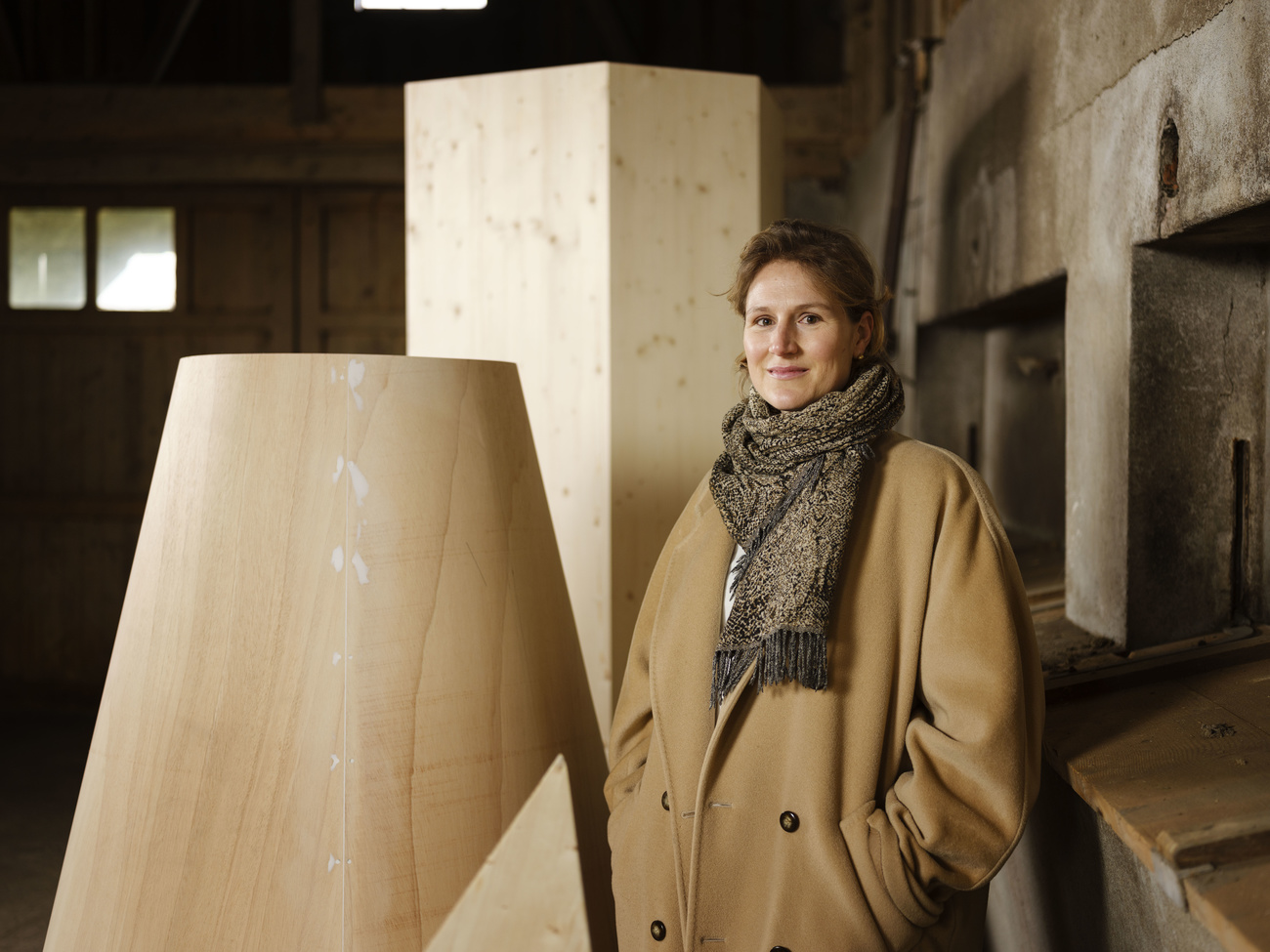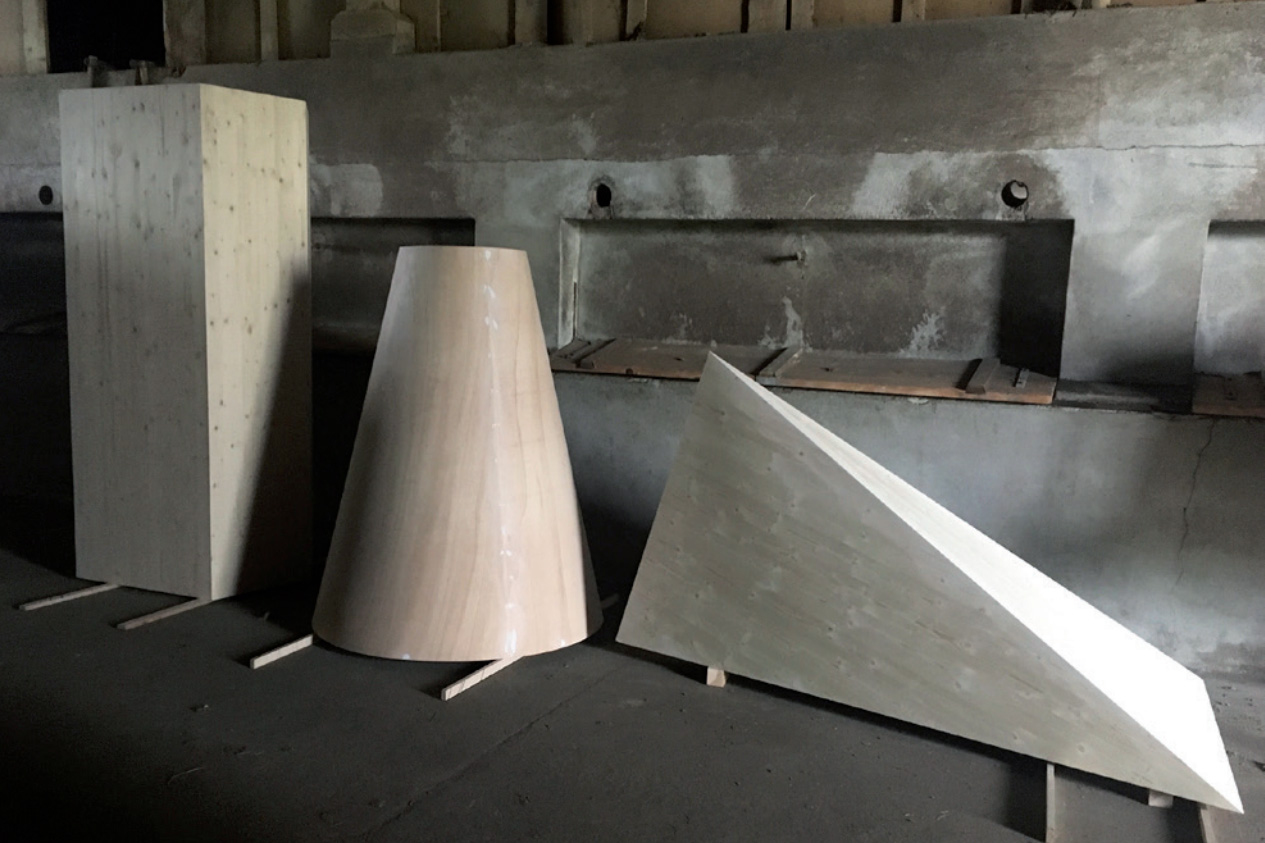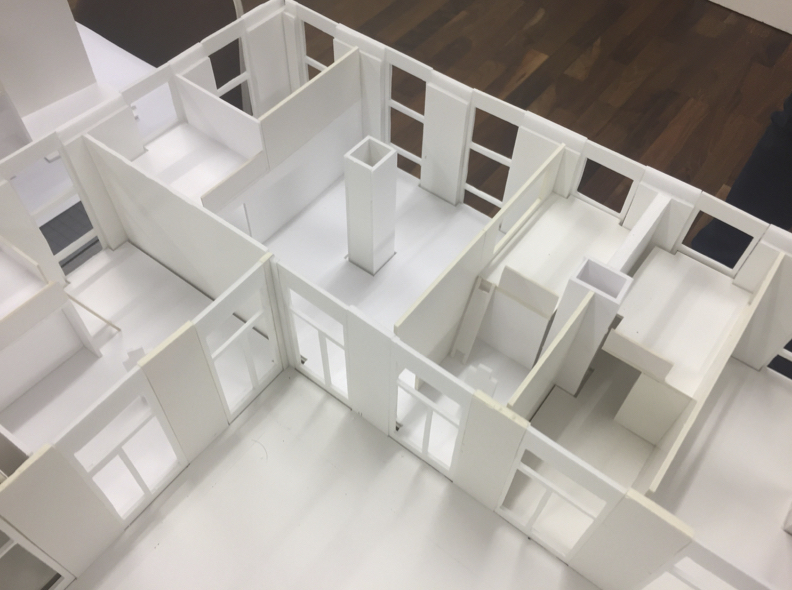
Exploring the space between the human body and architecture

The Salon Suisse, organised by the Swiss Arts Council of Pro Helvetia, will be held once again at this year’s International Architecture Exhibition in Venice. This time it is exploring the relationship between the human body and architecture – an appropriate theme after a year of social distancing.
Curated by Evelyn Steiner, the Salon Suisse at the 17th International Architecture Exhibition (Biennale Architettura) in Venice will include a series of lectures, debates and events under the title Bodily Encounters. SWI swissinfo.ch caught up with Steiner at her studio in Zurich.
SWI swissinfo.ch: The Salon Suisse will take place a year later than planned because of the Covid-19 pandemic. After lockdowns and social distancing, “Bodily Encounters” seems almost like an appeal.
Evelyn Steiner (E.S.): Yes, the title could be interpreted as polemical after meeting people outside our own four walls was hardly possible, and sometimes not possible at all.
It’s about time things changed again. One of an architect’s responsibilities is to create spaces that allow and stimulate encounters during pandemics such as the one we’ve been in.
SWI: What kind of encounters can we expect in the Salon?
E.S.: Various fields and disciplines intersect with architecture to explore the diverse relationships between space and the body.
At the opening, visitors will have an experience with their own body. In one performance, three wooden sculptures created by Swiss artist Katharina Anna Wieser move like living creatures and interact with the visitors. A singer will also perform a newly composed opera with quotations from architectural theory and history.
SWI: The historical quotations show that the body has always been an important part of architecture. Why is there a need to discuss the relationship between the body and architecture again today?
E.S.: Over the last 50 years, humanities studies have dealt intensively with the human body with the rise of interventions such as reproductive medicine or computer technologies such as Artificial Intelligence.
It is also a point of discussion in gender studies on identity politics. All of the above are only debated marginally in architecture. Linking the human body with architecture and other disciplines allows for wild combinations that can take us by surprise.
Evelyn Steiner is an architect, art historian and curator. After completing her architecture studies at the Federal Technology Institute ETH Zurich and in Buenos Aires, she worked in various architectural offices in Rome, Barcelona and Zurich. In 2012 she received a Master’s in Art History at the University of Bern.
She has curated several architecture exhibitions, such as “Aristide Antonas. Protocols of Athens” (2015), “Constructing Film. Swiss Architecture in the Moving Image” (2016), and the Swiss adaptation of the exhibition “Frau Architect. Over 100 Years of Women in Architecture” (2020).
SWI: Do you have an example of such a surprise?
E.S.: Take architecture and transhumanism. The physical and mental transformation of the human body when we apply a new technology such as chip implants is at the centre of this philosophical debate.
How do the latest achievements in medicine and neuroscience change our perception and planning of architecture? What do spaces and urban structures for “optimised” residents look like?
SWI: You refer to humans as cyborgs. Haven’t today’s “smart homes” become the home for cyborgs today?
E.S. Hyperconnected smart homes or so-called Conscious Environments have a unique relationship with their dwellers. However, even buildings that haven’t received a digital upgrade aren’t just static objects. They are subjects that speak to a person, that have a dialogue with us.
They are both public and private. They hold a collective memory, shape their own biographies, and develop their own personalities. Architecture is very present in our lives, but it is not part of school curricula. We learn about poets, but not about female architects.

SWI: Architectural norms and standards are the focus of the November edition of the Salon. Do current debates about social identities also influence the way we design buildings?
E.S.: The Swiss lag behind when it comes to adapting architecture such as making alterations to improve access for physically disabled people.
Architecture progresses slowly and doesn’t react as quickly to social events as art does. Our houses are still designed for a family of four even though the way people live together has changed.
SWI: Is that really still the case? Earlier this year, the highly publicised “Zollhaus” (Customs house) building opened in Zurich. The architecture of the indoorExternal link living spaces lets people design their own living spaces with moveable units.
E.S.: The “Zollhaus” is an exception in Switzerland. It is hard to find a similar living space in rural areas.
SWI: Are “fluid” living spaces the solution? The term “fluid” also comes to mind when we talk about non-binary gender identities. What does it mean in architecture?
E.S.: In my view, fluid spaces are multi-functional spaces that do not have a specific purpose. We will discuss this topic with New York architect Joel SandersExternal link in the Pavilion. Sanders has been involved in the queer debate from the very beginning and has written a lot about non-binary identities and architecture. In his most recent project, he uses the fluid concept to the museum space as an attempt to make it more inclusive.
SWI: At this year’s Biennale Architettura, which is under the theme “How will we live togetherExternal link?“, architect and curator Hashim Sarkis is seeking solutions for how individuals can live together in large communities to address global challenges. The first exhibit, “Among Diverse Beings”, focuses on the human body. Is this the first step towards the solution to the problem?
E.S.: I think we do have to start with ourselves. Who am I? How do I relate to other, foreign, and sometimes even sick bodies? When we talk about inclusive architecture, it is important to consider various identities and ways of living as well as the possibilities of medically altered or technically enhanced bodies.
SWI: Aging bodies are also a theme in the November event at the Salon. What does Anti-Aging architecture entail?
E.S.: The concept of Anti-Aging architecture is the brainchild of Madeline Gins and Shusaku Arakawa. In 2008, the New York duo designed the Bioscleave House,External link which is deliberately designed to create a difficult relationship among residents.

The building doesn’t have inner walls, and the floors are uneven. The dwellers are constantly challenged which, according to the two artists, slows down the ageing process.
- September Salon “Kindred Spirits”
September 23-25 2021 - October Salon “Realities”
October 21-23, 2021 - November Salon “Alterations”
November 18-20, 2021

In compliance with the JTI standards
More: SWI swissinfo.ch certified by the Journalism Trust Initiative

















![The four-metre-long painting "Sonntag der Bergbauern" [Sunday of the Mountain Farmers, 1923-24/26] had to be removed by a crane from the German Chancellery in Berlin for the exhibition in Bern.](https://www.swissinfo.ch/content/wp-content/uploads/sites/13/2025/12/01_Pressebild_KirchnerxKirchner.jpg?ver=8f77363a)











You can find an overview of ongoing debates with our journalists here . Please join us!
If you want to start a conversation about a topic raised in this article or want to report factual errors, email us at english@swissinfo.ch.